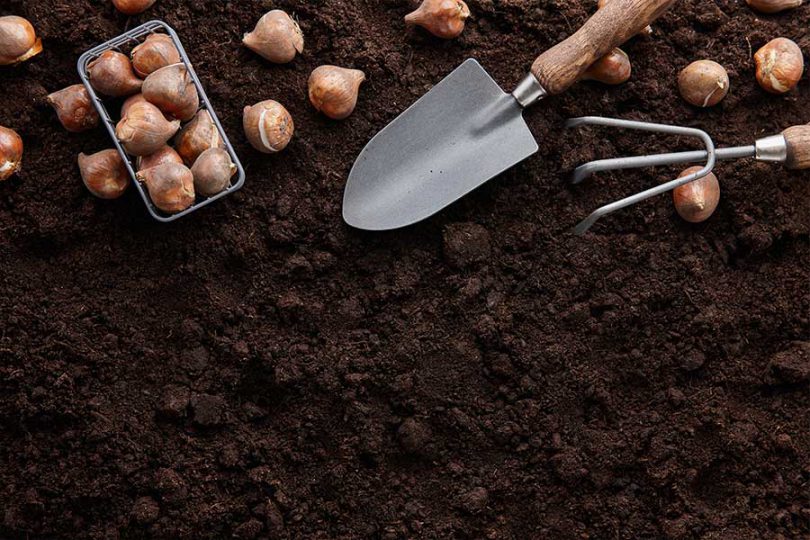Watching our gardens change throughout the season is one of the greatest joys of gardening. Who hasn’t been thrilled when germinated shoots push through the soil? Excitement continues as leaves grow, buds develop and flowers blossom to form fruits and seeds. As plants die or go into dormancy, you wonder how to add color to your garden, fill empty spaces and create an award-winning space.
One way to add color to garden beds and expand the flower season is to plant spring-blooming bulbs. But don’t wait until spring. In Colorado’s dry climate, these bulbs must be planted in the fall before the ground freezes. During the cooler months, they develop roots and absorb nutrients in preparation for those spring blooms.
Snowdrop flowers can be among the first spring bulbs to make an appearance. Keep a watchful eye or you might not notice their delicate white flowers poking through winter snow. Crocuses are the next early bloomers. They will certainly catch your attention as lovely pastel petals emerge in an otherwise bare garden bed. Then, just as you begin to enjoy these harbingers of spring, Colorado’s inevitable spring snow arrives. You feel certain they will die, but crocuses are amazingly resilient and will continue blooming after the snow melts.
Plant crocuses along borders, in rock gardens or among low-growing ground cover where their thin green leaves blend in after the petals drop. You can even plant them in your lawn for a natural meadow look. Just don’t mow until the foliage begins to wither. Since crocuses naturalize, they become crowded over time and produce fewer flowers. You can dig some up after the flowers fade and divide them into smaller clusters. You don’t have to wait until fall to replant them.
Another early- to mid-spring bloomer is the tiny bell-shaped clusters of hyacinths. Their highly fragrant flowers come in rich colors that span the spectrum. Hyacinths are most appreciated when planted along a walkway or patio where their striking floral display and lovely scent bring great joy during a long blooming cycle.
Other spring-blooming bulbs to consider are alliums, daffodils and tulips, all of which perform better when planted in the fall and allowed to winter over.
Alliums are in the onion family and come in a variety of sizes. Globemaster and Purple Sensation have huge, globular blooms. More subdued varieties display bursts of tiny flowering clusters. Regardless of size, alliums add a unique dimension.
Emperor tulips are known for their huge flowers in different colors. Fiery Red Emperors are particularly eye-catching. Purple Prince is preferred for its long-lasting, rich purple blooms with slightly scalloped edges. Later-blooming Queen of the Night tulips are deep, rich purple with tones of burgundy. Some almost appear black and create a dramatic contrast when planted with White Emperors.
Daffodils, or jonquils, are a favorite because they adapt easily to various climatic conditions and require little care but produce an abundance of flowers. They will proliferate year after year and are easily transplanted anywhere needing a splash of color. Since deer don’t like daffodils, they help protect the tastier tulip when planted together.
So, as you enjoy your fall flowers, start thinking spring and get some bulbs in the ground. And remember, regardless of which bulbs you choose, they will add color to your garden and have the most dramatic effect when planted in clusters.
Want more inspiration? Visit click here to see Garden Media Groups latest trends in gardening.
Gardener Vicki Spencer has an eclectic background in conservation, water, natural resources and more. For more of her gardening articles, click here.

